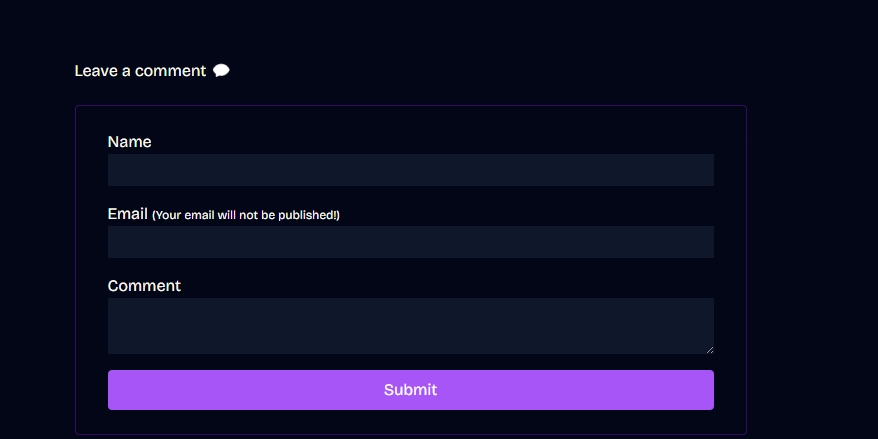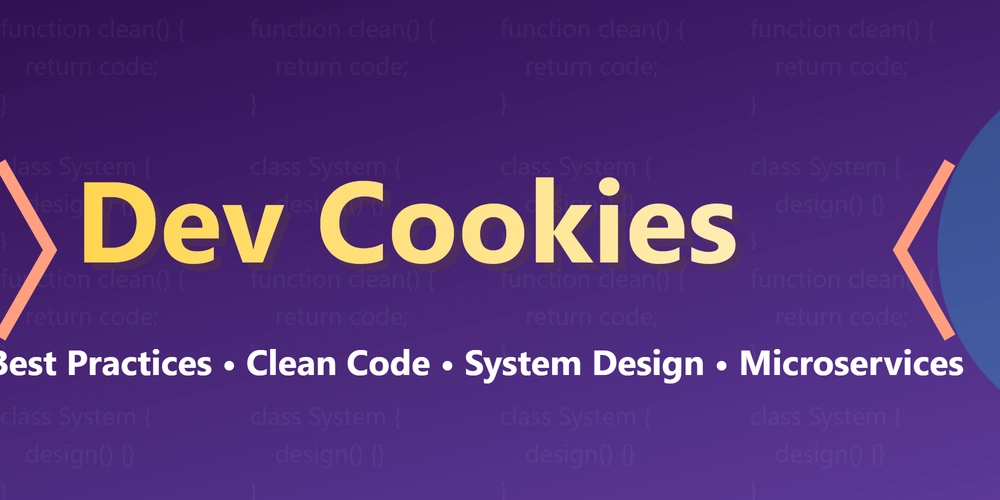How Engineering Saved My Friend’s Blog $15 a Month—And Why It Matters
In the world of software development, there’s a saying: “Why buy when you can build?” While this isn’t always the best advice (sometimes reinventing the wheel is a waste of time), there are moments when rolling up your sleeves and building a custom solution can lead to significant savings, better control, and a deeper understanding of your system. This is the story of how I helped my friend save $15 a month by engineering a feature for their blog—and why it’s a win worth celebrating. The Problem: Real-Time Comments on a Budget Having built out the basic functionality for my friend's blog, she wanted to include a comments section where readers could engage with their content. Since we had already used Sanity.io to this point, we initially considered using it again for this feature. However, Sanity offers a real-time comments feature, but it comes at a cost: $15 per month. While $15 might not seem like much, over time, it adds up. For a small blog, every dollar counts, and we wanted to avoid recurring costs wherever possible. But the real question was: Could we build this feature ourselves? And if so, would it be worth the effort? The Solution: Building a Custom Real-Time Comments System Instead of paying for Sanity’s real-time comments feature, I decided to engineer a custom solution using Supabase, an open-source alternative to Firebase. Here’s how I did it: Database Setup: I created a comments table in Supabase to store all comments. Each comment included fields like name, email, comment, post_id, and created_at. Real-Time Updates: Supabase’s real-time functionality allowed me to listen for new comments and update the UI dynamically. This meant readers could see new comments appear instantly without refreshing the page. Custom API: I built a simple API endpoint to handle comment submissions. When a reader submits a comment, it’s saved to the Supabase database, and the real-time subscription updates the UI. Cost Savings: Supabase’s free tier was more than enough for our needs, meaning we paid $0 for this feature. Over time, this saves my friend $180 per year—and potentially thousands over the lifetime of the blog. The Engineering Advantage Building this feature wasn’t just about saving money. It was about flexibility, control, and learning. Here’s why engineering this solution was worth it: Total Control: By building the feature ourselves, we had complete control over how it worked. We could customize the UI, add new features (like comment moderation), and optimize performance. No Vendor Lock-In: Relying on a third-party service like Sanity’s real-time comments feature would have tied us to their platform. By using Supabase, we retained the freedom to switch databases or even build our own backend in the future. Learning Opportunity: Building this feature from scratch gave me a deeper understanding of real-time systems, database design, and API integration. These skills are invaluable and can be applied to future projects. Cost Efficiency: While $15 a month might seem trivial, it’s a recurring cost that adds up over time. By building the feature ourselves, we saved $180 per year—money that can now be invested in other areas of the blog. The Bigger Picture: Why This Matters This isn’t just a story about saving $15 a month. It’s a story about empowerment through engineering. In a world where SaaS solutions are often the default choice, it’s easy to forget the value of building things yourself. Here’s why this approach matters: Sustainability: Recurring costs can quickly add up, especially for small projects or startups. By building custom solutions, we can keep expenses low and reinvest savings into growth. Customization: Off-the-shelf solutions often come with limitations. Building our own feature allows us to tailor it to our exact needs. Skill Development: Every project is an opportunity to learn. By building this feature, I gained valuable experience that will benefit me in future endeavors. Independence: Relying on third-party services can be risky. By building our own solutions, we reduce dependency on external providers and gain more control over our product. The Takeaway: Build vs. Buy So, should we always build instead of buy? Not necessarily. There are times when using a third-party service makes sense—especially when time is limited or the feature is highly complex. But for small, manageable features like a comments section, building our own solution can be a smart move. In this case, engineering the real-time comments feature saved my friend $15 a month, but more importantly, it gave us control, flexibility, and confidence in our ability to solve problems. And that’s worth far more than $15. Final Thoughts In the end, this project was a reminder that engineering is about more than just writing code. It’s about solving problems, making smar

In the world of software development, there’s a saying: “Why buy when you can build?” While this isn’t always the best advice (sometimes reinventing the wheel is a waste of time), there are moments when rolling up your sleeves and building a custom solution can lead to significant savings, better control, and a deeper understanding of your system. This is the story of how I helped my friend save $15 a month by engineering a feature for their blog—and why it’s a win worth celebrating.
The Problem: Real-Time Comments on a Budget
Having built out the basic functionality for my friend's blog, she wanted to include a comments section where readers could engage with their content. Since we had already used Sanity.io to this point, we initially considered using it again for this feature. However, Sanity offers a real-time comments feature, but it comes at a cost: $15 per month. While $15 might not seem like much, over time, it adds up. For a small blog, every dollar counts, and we wanted to avoid recurring costs wherever possible.
But the real question was: Could we build this feature ourselves? And if so, would it be worth the effort?
The Solution: Building a Custom Real-Time Comments System
Instead of paying for Sanity’s real-time comments feature, I decided to engineer a custom solution using Supabase, an open-source alternative to Firebase. Here’s how I did it:
-
Database Setup:
- I created a
commentstable in Supabase to store all comments. Each comment included fields likename,email,comment,post_id, andcreated_at.
- I created a
-
Real-Time Updates:
- Supabase’s real-time functionality allowed me to listen for new comments and update the UI dynamically. This meant readers could see new comments appear instantly without refreshing the page.
-
Custom API:
- I built a simple API endpoint to handle comment submissions. When a reader submits a comment, it’s saved to the Supabase database, and the real-time subscription updates the UI.
-
Cost Savings:
- Supabase’s free tier was more than enough for our needs, meaning we paid $0 for this feature. Over time, this saves my friend $180 per year—and potentially thousands over the lifetime of the blog.
The Engineering Advantage
Building this feature wasn’t just about saving money. It was about flexibility, control, and learning. Here’s why engineering this solution was worth it:
-
Total Control:
- By building the feature ourselves, we had complete control over how it worked. We could customize the UI, add new features (like comment moderation), and optimize performance.
-
No Vendor Lock-In:
- Relying on a third-party service like Sanity’s real-time comments feature would have tied us to their platform. By using Supabase, we retained the freedom to switch databases or even build our own backend in the future.
-
Learning Opportunity:
- Building this feature from scratch gave me a deeper understanding of real-time systems, database design, and API integration. These skills are invaluable and can be applied to future projects.
-
Cost Efficiency:
- While $15 a month might seem trivial, it’s a recurring cost that adds up over time. By building the feature ourselves, we saved $180 per year—money that can now be invested in other areas of the blog.
The Bigger Picture: Why This Matters
This isn’t just a story about saving $15 a month. It’s a story about empowerment through engineering. In a world where SaaS solutions are often the default choice, it’s easy to forget the value of building things yourself. Here’s why this approach matters:
-
Sustainability:
- Recurring costs can quickly add up, especially for small projects or startups. By building custom solutions, we can keep expenses low and reinvest savings into growth.
-
Customization:
- Off-the-shelf solutions often come with limitations. Building our own feature allows us to tailor it to our exact needs.
-
Skill Development:
- Every project is an opportunity to learn. By building this feature, I gained valuable experience that will benefit me in future endeavors.
-
Independence:
- Relying on third-party services can be risky. By building our own solutions, we reduce dependency on external providers and gain more control over our product.
The Takeaway: Build vs. Buy
So, should we always build instead of buy? Not necessarily. There are times when using a third-party service makes sense—especially when time is limited or the feature is highly complex. But for small, manageable features like a comments section, building our own solution can be a smart move.
In this case, engineering the real-time comments feature saved my friend $15 a month, but more importantly, it gave us control, flexibility, and confidence in our ability to solve problems. And that’s worth far more than $15.
Final Thoughts
In the end, this project was a reminder that engineering is about more than just writing code. It’s about solving problems, making smart decisions, and creating value. By building our own real-time comments system, we not only saved money but also gained a deeper appreciation for the power of engineering.
So, the next time we’re faced with a decision to build or buy, we’ll ask ourselves: Can we engineer a solution that’s better, cheaper, and more aligned with our goals? If the answer is yes, we’ll roll up our sleeves and start building. The rewards—both financial and personal—are well worth it.
What do you think? Have you ever built a custom solution to save money or gain more control? Share your story in the comments below! (And yes, the comments are real-time, thanks to our custom-built system.













































































































































































![[The AI Show Episode 142]: ChatGPT’s New Image Generator, Studio Ghibli Craze and Backlash, Gemini 2.5, OpenAI Academy, 4o Updates, Vibe Marketing & xAI Acquires X](https://www.marketingaiinstitute.com/hubfs/ep%20142%20cover.png)



























































































































![[FREE EBOOKS] The Kubernetes Bible, The Ultimate Linux Shell Scripting Guide & Four More Best Selling Titles](https://www.javacodegeeks.com/wp-content/uploads/2012/12/jcg-logo.jpg)



![From drop-out to software architect with Jason Lengstorf [Podcast #167]](https://cdn.hashnode.com/res/hashnode/image/upload/v1743796461357/f3d19cd7-e6f5-4d7c-8bfc-eb974bc8da68.png?#)





































































































.png?#)





.jpg?#)
































_Christophe_Coat_Alamy.jpg?#)










































































































![Rapidus in Talks With Apple as It Accelerates Toward 2nm Chip Production [Report]](https://www.iclarified.com/images/news/96937/96937/96937-640.jpg)





































































































































